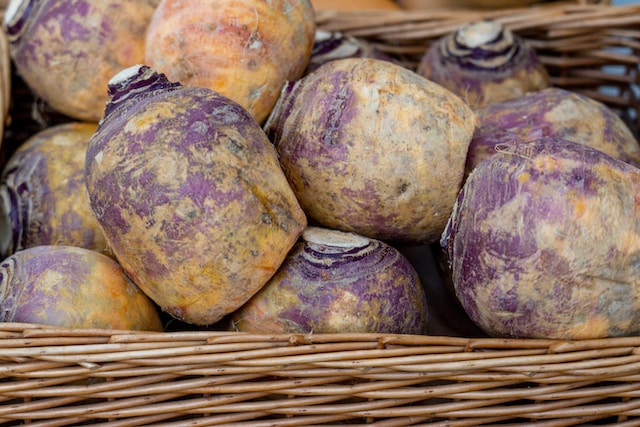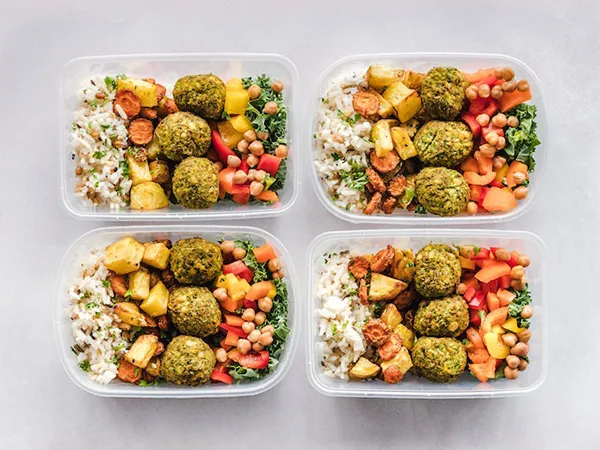The Perfect Grocery List for 2: 46 Essential Foods to Buy
As a chef with over a decade of experience cooking for families, couples, and singles, I know first-hand how difficult it can be to shop and cook for just two people. It’s so easy to overbuy and waste food! But having a perfectly planned grocery list makes cooking for two simple and affordable.
Getting the groceries RIGHT is key for eating well without waste. That’s why I’ve created the PERFECT grocery lists for two! Okay maybe it’s not perfect but it is well thought thru.
Download my complete weekly shopping grocery list for 2 that has the EXACT ingredients and amounts you’ll need to cook up my basic meal plan for two people for a week. It’s perfectly tailored so you only buy what you need. NO MORE spoiled food!
And for stocking up your pantry, get my comprehensive monthly grocery list. It has all the staples, fresh produce, proteins, and more so your kitchen is always ready for whipping up yummy meals.
In this post, I’ll give you the inside scoop on every item on the list and why they are essential for healthy, homemade cooking for two. With my tips, you’ll be a shopping pro!
We’ll also talk about smart strategies, my go-to recipes, and anything else you’ve ever wondered about grocery shopping and cooking for two. Get ready to save time, money, and trips to the store! Let’s dive in – this is going to be fun!
How to Grocery Shop for 2 People: step by step

Okay, let’s break it down step by step – how the heck do you grocery shop when cooking for just two people? I’ve got your back!
Step 1. Make a monthly meal plan and budget. Helps you save money and helps with food spending.
Step 2. Compare prices between stores. Look up deals online and at different markets.
Step 3. Shop according to your list! Avoid aisles you won’t need, and if you shop online don’t get caught up browsing special offers.
Step 4. Prep ingredients ahead. Wash, clean, peel, and chop produce and store it properly. If you are a beginner and want to learn more about meal planning, I wrote a whole post for you!
Step 5. Meal prep like crazy. Cook your grain, beans, and legumes, and store them in airtight containers so they’re ready to go. Freeze everything that won’t be used in the next 3 days.
Extra tips.
- Buy small packages of fresh produce like spinach, herbs fresh fruit. Avoid family-size packages and waste from larger sizes.
- I look at grocery stores for deals on our list of items get extra food and freeze as soon as I get home!
My top tips for grocery List for 2 people
A grocery list for 2 people takes some practice, but you’ll be a pro in no time with these tips:
- Make a meal plan first so you only buy what you need for recipes.
- Always shop with a list based on your meal plan. Avoid those impulse buys!
- Know what you have at home already so you don’t duplicate staples.
- Stick to purchasing only the quantities your recipes call for. No waste!
- With non-perishables or products with good shelf life like dried beans, frozen vegetables, frozen fruit, and canned goods you can buy in bulk to save money.
- Buy larger packages or pieces of meat and fish, then divide and freeze portions. Saving money in the long run!
- Get creative with leftovers! Repurpose them for future meals or lunches.
Get my meal plan here for free!
Get the weekly grocery list here!
The key is sticking to your list and buying only what you know you’ll use. It takes some planning and getting used to buying and cooking smaller quantities. But you’ll be a pro meal planner and shopper for two in no time!
Building a Healthy, Affordable Grocery List for 2

Eating healthy gets a bad rap for being expensive and complicated. But with a little planning, you can build a monthly grocery budget that fits your needs.
I skip the processed foods and load up my cart with nutrient-dense whole foods – fruits, veggies, lean protein, whole grains. This stuff keeps me energized, satisfied, and glowing.
The key is having a plan before you shop. Make a detailed grocery list for 2 so you only buy what you need. That way you avoid impulse buys and pricier packaged items.
But when your fridge is empty, it’s way too tempting to call for delivery. You’ll end up spending more on meals that likely aren’t as healthy.
So do yourself and your wallet a favor – make a list and stick to it! Getting in the meal prep mindset will make healthy eating easy, fun, and affordable.
Your Weekly Meal Plan and Grocery List
Get ready for a complete weekly meal plan to make grocery shopping and cooking for two a breeze!
To start, here are the links to download the grocery list for 2 people.
Now let’s get into the full 7-day meal plan. I’ve created daily menus with breakfast, lunch, dinner, and snacks to average 2,200 calories per day.
If meal planning seems daunting, don’t worry! Check out my blog post on beginner meal prep tips to get started.
This meal plan takes the guesswork out of grocery shopping and cooking for two. With a little practice, you’ll be a pro meal planner and cook in no time!
Your 46 Essential Foods Shopping List
Fresh Fruits and Fresh Vegetables

Fruits and vegetables should form the foundation of any healthy diet. They provide essential vitamins, minerals, fiber, and antioxidants to keep you nourished. Eating a rainbow of produce can help reduce the risk of chronic diseases and promote longevity. Having a variety on hand makes it easy to add to meals and snacks or enjoy raw with dips.
Apples/Pears
These crunchy fruits have fiber, and vitamin C and are low-calorie. Also contains antioxidants like quercetin.
Avocado
Creamy avocados provide heart-healthy monounsaturated fats, fiber, vitamins C, E, K, and folate. Their rich texture adds smoothness to dishes.
Bananas
Convenient, portable healthy fruit that provides potassium and fiber. Also contains vitamin B6 and magnesium.
Bell peppers
– Colorful bell peppers are rich in vitamin C, providing a burst of immunity-boosting goodness. The variety of carotenoid antioxidants boosts skin and eye health.
Berries
(fresh or frozen) – All berries are nutritional powerhouses high in vitamin C and antioxidants. The polyphenols in berries protect cells from damage and inflammation.
Broccoli
This cruciferous veggie is loaded with vitamins, minerals, and fiber to keep you regular. The compounds in broccoli may help prevent cancer and boost detoxification.
Carrots
Crunchy, sweet carrots are packed with immune-boosting vitamin A. They also provide vitamin K1, potassium, and antioxidant carotenoids like beta-carotene.
Cauliflower
This versatile veggie provides antioxidants and phytonutrients to fight inflammation. With low carbs and calories, cauliflower makes a great rice substitute.
Cucumber
Hydrating cucumbers are low-calorie with antioxidants and minerals. The water content in cucumbers can help flush out toxins.
Fresh herbs
Cilantro and parsley – Packed with phytonutrients. Enhance the flavor of dishes without adding fat, salt, or sugar.
Garlic
Contains allicin, an antioxidant with antimicrobial and immune-boosting effects.
Green beans
Crisp, fresh beans are low in calories and high in fiber. They contain antioxidants like carotenoids vitamin C and vitamin K for immune support.
Kale, spinach, arugula
Leafy greens – supply calcium, iron, vitamins K, A, C, and folate. Vital for good health.
Lemons
Tart, juicy lemons are packed with immune-boosting vitamin C. The citric acid in lemons provides alkalizing effects to help remove toxins. Excellent source of vitamin B6.
Mushrooms
Nutrient-dense mushrooms offer a meaty umami flavor and are loaded with immunity-boosting compounds. They are an excellent source of B vitamins like riboflavin and pantothenic acid. Excellent source of selenium and copper.
Onions
Red, white, leeks, and spring onion – contain quercetin and sulfur compounds that may boost immunity. Regular onion intake is associated with lower cholesterol and blood pressure.
Peppers
Crunchy, sweet peppers are loaded with vitamin C and antioxidants like vitamin E.
Pumpkin/Squash
Rich in vitamin A, potassium, and fiber. Their bright orange color comes from beta-carotene, an antioxidant that promotes healthy vision and immunity.
Sweet potatoes
These orange spuds are full of beta-carotene, vitamin C, and fiber. Their vibrant color indicates the presence of carotenoid antioxidants.
Tomatoes
Juicy tomatoes of all types deliver a dose of vitamin C and lycopene. Regular tomato consumption is linked to lower cancer risk.
Zucchini
Mild zucchini is low-calorie and provides hydration and fiber. Also contains vitamin C and manganese.
Proteins
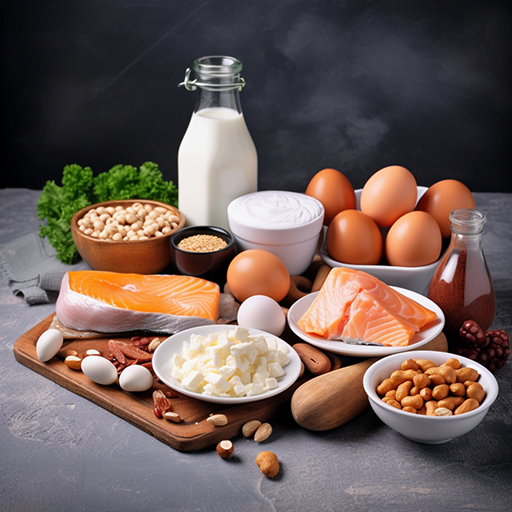
Protein foods are vital for building and repairing muscles, providing lasting energy, and keeping you satisfied between meals. Rotate through different lean protein sources like poultry, fish, eggs, beans, yogurt, and more to get a mix of nutrients.
Bacon
Opt for turkey or lean pork bacon in moderation. Adds lots of flavor but is also high in saturated fat and sodium.
Beans/Canned beans
Fiber-rich plant-based protein. Help lower cholesterol and control blood sugar. Also high in folate, magnesium, and potassium.
Canned tuna
Budget-friendly canned fish high in protein, low mercury risk. Also provides selenium, niacin, and vitamin B12.
Chicken breasts
Lean, versatile protein source. High in nutrients but lower fat than thighs. Rich source of B vitamins like niacin.
Egg whites
Packed with protein, low-calorie, nutrient-rich. Also, provides selenium and riboflavin.
Lean beef mince
Choose 90-95% lean when possible. Makes a nutritious base for tacos, meatballs, burgers, etc. Provides iron, zinc, and B vitamins.
Salmon
Excellent source of anti-inflammatory omega-3 fatty acids. Good protein source with vitamin B12 and potassium.
Turkey and turkey mince
Lower fat option compared to beef. Provides B vitamins, zinc, and potassium.
Grains
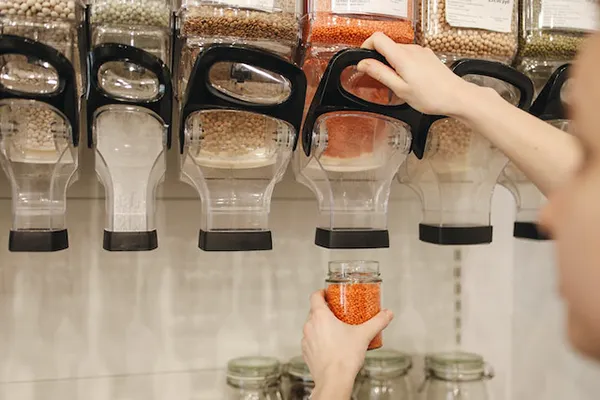
Whole grains provide important nutrients like fiber, B vitamins, iron, and magnesium. They make satisfying meal bases or can be used in salads. Opt for whole grains whenever possible over refined versions.
Brown rice
High in manganese and contains fiber, iron, and antioxidants. Whole grains help control blood sugar.
Lentils
Good plant-based protein and is high in fiber to aid digestion. Also provides iron, folate, and magnesium.
Oats
Contain beta-glucan fiber to lower cholesterol levels and keep you fuller longer.
Rice Noodles
A gluten-free alternative to traditional noodles. Look for whole-grain options.
Dairy
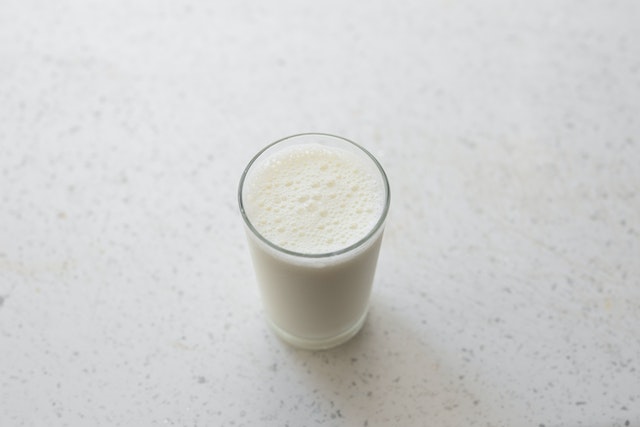
Dairy products like yogurt, cheese, and milk provide protein, calcium, vitamin D, and other nutrients. Choose low or reduced-fat versions when you can to limit saturated fat intake.
Butter
Contains good fats, and fat-soluble vitamins, and adds richness and moisture to dishes. Use sparingly.
Cheese
Provides protein, calcium, and vitamin A. Opt for low-fat versions and use cheese as a flavor enhancer in moderation. Contains vitamin B12 and zinc.
Greek yogurt
An excellent source of protein and calcium. The strained yogurt has less sugar and more protein than regular. Also contains probiotics.
Pantry Items

Having a well-stocked pantry is key for effortless meals! Staples like oils, vinegar, wraps, and nut butter take dishes from bland to delicious. Having a range of oils, vinegar, seasonings, and condiments in your pantry is essential for quickly pulling together delicious, nutritious meals for two.
With flavor boosters on hand, you can transform basic ingredients into exciting dishes. A well-stocked pantry prevents you from getting bored and ordering takeout.
Dried fruits
Packed with antioxidants, fiber, and nutrients. Watch portions as they are high in natural sugars.
Condiments
Skip the ketchup and mayo and opt for mustard, salsas, and fermented hot sauces they add loads of flavor without many calories. Check labels for added sugar.
Flour
Choose 100% whole wheat for bread, pizza dough, pancakes, etc. for a nutrient boost over white flour.
Herbs/spices
like garlic powder, chili powder, and onion powder, and also don’t forget about the fresh herbs. – Provides antioxidants and anti-inflammatory effects. Enhance flavor without added salt or sugar.
Olive oil
Provides healthy monounsaturated fats and phytochemicals. Use for cooking and dressings.
Nuts and seeds
Excellent source of healthy fats, protein, and fiber. Raw, unsalted is best. Sprinkle on salads or enjoy as a snack.
Nut butter
High in protein and healthy fats. Look for options with no added sugar. Makes a great sandwich spread or dip for fruit
Rice cakes
Low-calorie, whole-grain alternative to crackers and bread. Top with nut butter, avocado, or hummus for a balanced snack.
Vinegar
Adds a tangy flavor and has antimicrobial properties. Has uses in pickling, vinaigrettes, and dressings.
Pro-tip on oils: Always buy cold-pressed extra virgin olive oil! Because it’s the least processed and most nutritious type of olive oil. The “cold pressed” means the oil is extracted from the olives without the use of heat, which preserves more of the natural flavor and nutrients.
Choosing cold-pressed extra virgin olive oil provides all the benefits of olive oil – monounsaturated fats, vitamins E and K, and phytochemicals – without the loss of nutrients caused by heat and over-processing. Even with seed oils try to opt for cold-pressed oils. You don’t want to know how refined oils are made!
Extra Tips for Shopping and Cooking for Two
- When shopping, stick to your grocery list based on your weekly meal plan to avoid overbuying.
- Opt for smaller packages of proteins, frozen veggies, and fruit to prevent waste. Proper storage at home is key – use quality food containers to maximize freshness.
- When prepping, portion out proteins and grains into servings ready for quick weeknight meals. Chop vegetables and wash produce when you get home to have ingredients ready to grab.
- Cook once, and eat twice by preparing extra grains or starches to use in multiple dishes throughout the week. Repurpose leftovers creatively to reduce waste.
- Shop smarter, prep efficiently, and store properly to make cooking for two feel easy. You’ll save money, reduce waste, and have delicious ingredients ready for any weeknight meal!
3 Tasty Meals for 2
Turkey Meatballs with Zucchini Noodles
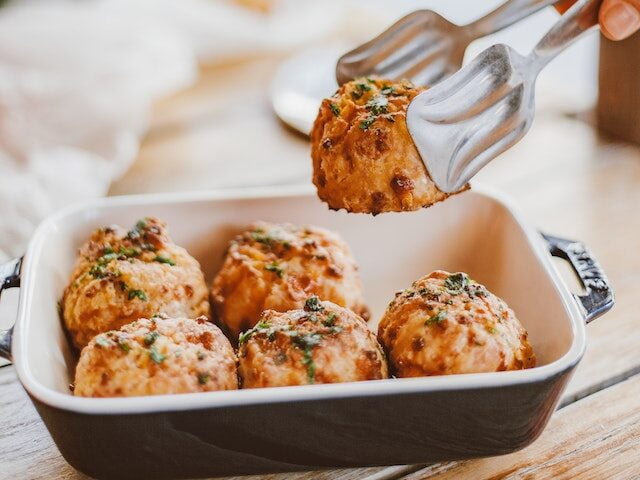
Turkey meatballs use lean ground turkey and are served with juicy fresh zucchini, for a lighter, gluten-free pasta swap. This meal provides protein, vitamins, and minerals without the carbs and calories of heavy pasta.
Baked Salmon With Sweet Potato and Broccoli

Salmon is packed with anti-inflammatory omega-3s. Paired with nutritious sweet potatoes and broccoli, this sheet pan meal is simple to make and provides complete nutrition in one dish.
Veggie Egg White Omelet

Egg whites provide lean protein without excess cholesterol from yolks. Combine with sauteed spinach, tomatoes, onions, and mushrooms, and enjoy this nutrient-dense omelet. The veggies offer a big nutritional boost.
Frequently Asked Questions
How do I budget for 2 people?
- Make a meal plan and grocery list each week to stick to needs not wants
- Shop sales and store brands when possible
- Buy shelf-stable items in bulk when prices are lowest
- Focus on inexpensive proteins like eggs, beans, chicken thighs, ground beef
- Freeze extras like bread or meat when on sale to prevent waste
How do I buy food for 2 people?
- Check your pantry first to make a list of what you need
- Buy smaller quantities to avoid spoilage
- Prep produce when you get home so it’s ready to cook later
- Double up recipes and freeze half for another meal
- Share larger packages with a friend if needed
What is an average grocery list?
For 2 people, aim for 3-4 proteins, 5-6 produce items, 1-2 grains, plus oils, seasonings, and other pantry staples. Buy only what you know you’ll use up.
How can I spend $30 per week?
- To build a cheap grocery list – focus on lower-cost proteins like beans, eggs, chicken thighs
- Buy in-season produce when prices are lower
- Purchase shelf-stable items in bulk when they are on sale
- Check and compare unit prices rather than focus on total cost
- Look for discounts, store brands, and utilize digital coupons
Conclusion

Now there you have it – a comprehensive weekly grocery list for 2 and to compliment it a weekly meal plan packed with delicious meals! Make a monthly budget, save money, and enjoy healthy meals!
I hope all my tips and this complete shopping list help take the stress out of grocery shopping and meal planning. No more scrambling last minute or wasting food and money. Make your grocery bill smaller, avoid impulse buys, and enjoy tasty, nourishing recipes made with essentials you’ll use up each week.
Remember, eating well doesn’t need to be complicated or expensive. With a little planning and smart shopping, you can enjoy fresh, wholesome budget-friendly meals.
Thanks for joining me on this foodie adventure. Remember, one bite at a time! See you soon.

